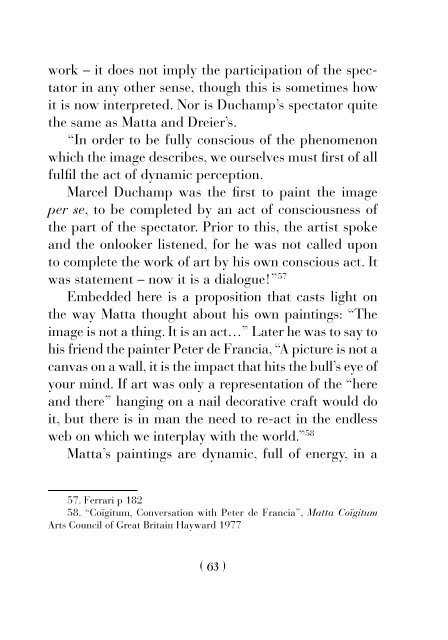Matta-Duchamp
Illustrated catalog featuring full page color illustrations and rare documentary photographs. Published by Galerie Gmurzynska in June 2018 to accompany a special cabinet exhibition at Art Basel 2018. The book includes texts by Professor Dawn Adès and Norman Rosenthal. It coincides with a broader re-evaluation of the importance of Matta internationally as well as of the influence of Duchamp on the work of 20th century artists. Edited and introduced by Krystyna Gmurzynska and Mathias Rastorfer. Essays by Dawn Adès and Norman Rosenthal. Historic interview excerpt by Robert Motherwell. 90 pages with 7 illustrations. Softcover. ISBN: 978-3-905792-09-6
Illustrated catalog featuring full page color illustrations and rare documentary photographs.
Published by Galerie Gmurzynska in June 2018 to accompany a special cabinet exhibition at Art Basel 2018. The book includes texts by Professor Dawn Adès and Norman Rosenthal. It coincides with a broader re-evaluation of the importance of Matta internationally as well as of the influence of Duchamp on the work of 20th century artists.
Edited and introduced by Krystyna Gmurzynska and Mathias Rastorfer.
Essays by Dawn Adès and Norman Rosenthal.
Historic interview excerpt by Robert Motherwell.
90 pages with 7 illustrations.
Softcover.
ISBN:
978-3-905792-09-6
Create successful ePaper yourself
Turn your PDF publications into a flip-book with our unique Google optimized e-Paper software.
work – it does not imply the participation of the spectator<br />
in any other sense, though this is sometimes how<br />
it is now interpreted. Nor is <strong>Duchamp</strong>’s spectator quite<br />
the same as <strong>Matta</strong> and Dreier’s.<br />
“In order to be fully conscious of the phenomenon<br />
which the image describes, we ourselves must first of all<br />
fulfil the act of dynamic perception.<br />
Marcel <strong>Duchamp</strong> was the first to paint the image<br />
per se, to be completed by an act of consciousness of<br />
the part of the spectator. Prior to this, the artist spoke<br />
and the onlooker listened, for he was not called upon<br />
to complete the work of art by his own conscious act. It<br />
was statement – now it is a dialogue!” 57<br />
Embedded here is a proposition that casts light on<br />
the way <strong>Matta</strong> thought about his own paintings: “The<br />
image is not a thing. It is an act…” Later he was to say to<br />
his friend the painter Peter de Francia, “A picture is not a<br />
canvas on a wall, it is the impact that hits the bull’s eye of<br />
your mind. If art was only a representation of the “here<br />
and there” hanging on a nail decorative craft would do<br />
it, but there is in man the need to re-act in the endless<br />
web on which we interplay with the world.” 58<br />
<strong>Matta</strong>’s paintings are dynamic, full of energy, in a<br />
57. Ferrari p 182<br />
58. “Coïgitum, Conversation with Peter de Francia”, <strong>Matta</strong> Coïgitum<br />
Arts Council of Great Britain Hayward 1977<br />
( 63 )

















